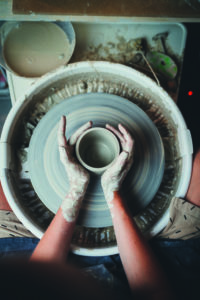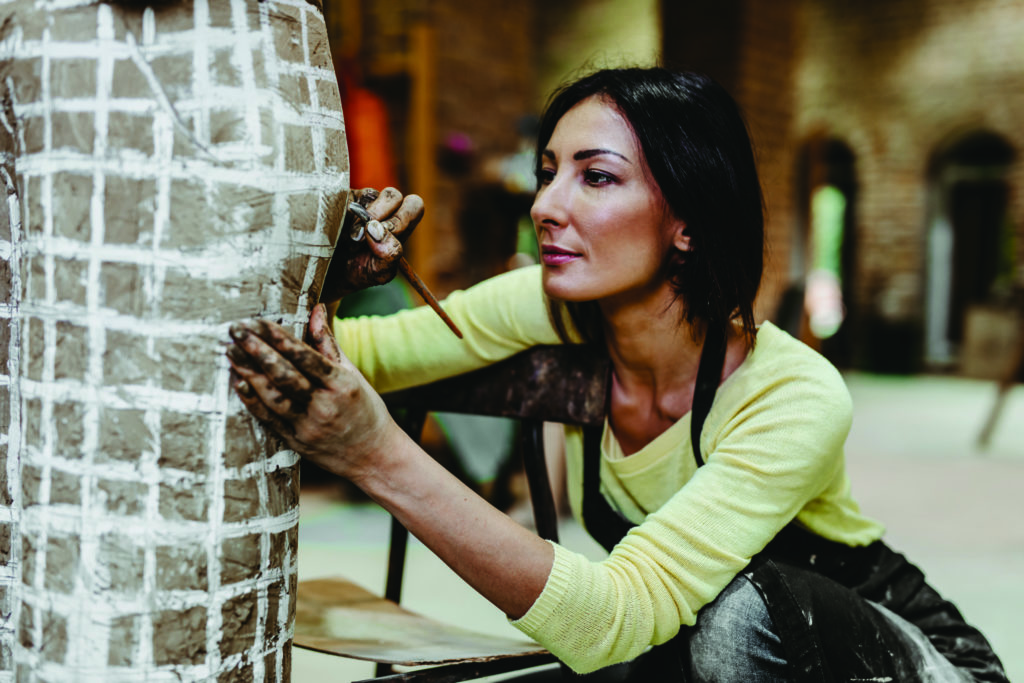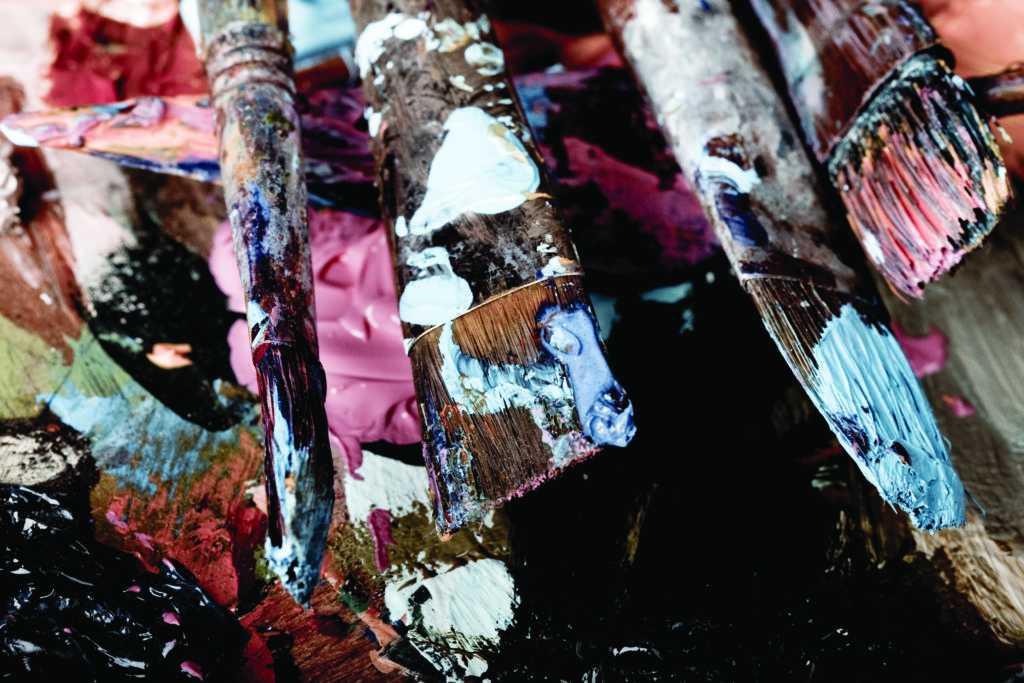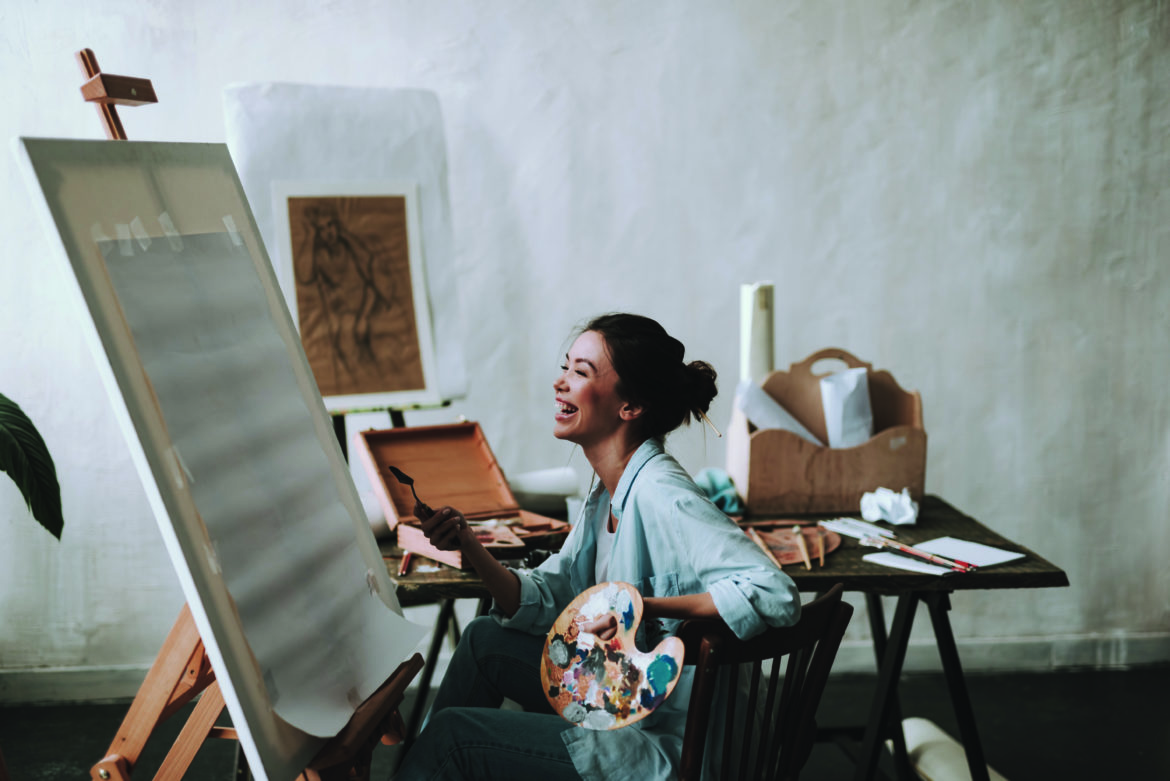Since time immemorial art has been a vital form of communication, self-expression, healing, and pleasure.

Art also can be a treatment for psychological disorders and mental illness, for adults and children alike; and yet, no formal program utilizing art as therapy existed in our country until the 1930s. Since then, it has developed into an important part of therapeutic treatment practiced in hospitals, clincis, public and private community agencies, wellness centers, educational institutions, business, and private practices in dealing with a wide-range of ailments: from anxiety, depression, eating or substance-use disorders, PTSD or stress, illness, and those who suffer psychological symptoms associated with their illness; likewise, those who are not dealing well with aging or unable to deal with geriatric issues, or have family or relationship problems. By all means, seek professional help as soon as possible if you suffer from any one of these afflictions. Butlook to art as one aspect of therapeutic treatment to help you through your journey.
Now what if you’re okay but feel a little off-balance or worn through? Engaging in art is both an ideal and practical solution–and what’s more, you don’t need to go to a doctor for a prescription. The truth is that all busy women lack one thing: time. There never are enough hours in the day and whenever you attempt to set some personal time aside, you’re invariably interrupted by the phone ringing, a text that needs answering, or someone knocking on the door, as you’re about to step into the bath. Being strung-out, tired, stressed, and over-worried is sort of like plaque: it builds up and unless you get your teeth cleaned, it only gets worse. One way to clear out stress from your life is to shift your focus away from your normal routine. That’s where art therapy comes in.
Art therapy can take many forms: dance, drama, expensive therapy, music, writing, and art. The purpose is the same: to dedicate a certain amount of time on a regular basis to follow a program that helps you explore self-expression, achieve peace and relaxation, and find time for self-examination. When you choose art as therapy, then you also refract your creative energies toward your inner renewal. The result? You’ll develop new coping skills as you open yourself to your emotions and identify your needs and boost your self-esteem and personal relationships.
Not everyone is an artist, but everyone has the ability to create art. By its very definition, art is visual self-expression. Two- and three-dimensional art–whether it’s painting, drawing, sculpting, ceramics, collage, quilt-making; whether your media is oils, acrylics, watercolors, fabric, or ink; indeed, even if you choose to express yourself through the color and pattern of planting a formal garden, can allow the shackles of stress and daily worry to fall by the wayside like petals off a rose past its bloom.

If you have some background in art and want to expand your horizons look for a local artist who gives lessons. Or you can enroll in art classes at a community center or nearby community, state, or private college, university, or even high school if you’re just starting out or taking up a medium you’ve never done before. Contact wellness centers and private therapy practices for a referral to an art therapy program. And if you don’t have time to attend a class, go online to MasterClass (www.masterclass.com) and take a course from Es Devlin, who teaches “Turning Ideas Into Art,” graphic design with David Carson, art and creativity with American artist Jeff Koons, spraypainting and abstract art with Futura, or online art courses offered by New Masters Academy (www.nma.art), The Ceramic School (ceramic.school) to learn ceramics, Love Life Drawing to learn figure drawing (www.lovelifedrawing.com), and to get inspiration, take an online art history course through MoMA, New York’s Museum of Modern Art, at www.moma.org.
Or you can embark upon your journey into art therapy all by yourself.
“At the deepest level, the creative process and the healing process arise from a single source. WHen you are an artist, you are a healer; a wordless trust of the same mystery is the foundation of your work and its integrity.”
– Rachel Naomi Remen, MD

CLAY AS ART THERAPY
Whether you choose ceramics or sculpture, clay is the most physically demanding type of art. In ceramics, you need a selection of tools (rib, needle, wire, trimmers), a potter’s wheel or molds, a kiln, colors and glazes, and time for firing. If you have never taken up ceramics, then you will need to have instruction, for sure. Not one of the nine-steps can be left out. When you put the clay on the potter’s wheel or pour the slip in a mold, you are engaged in a very physical exercise—on the potter’s wheel far more than a mold. Think of the classic scene in Ghost, starring Patrick Swayze and Demi Moore…well, think about it. Even though making a bowl or vase on a potter’s wheel isn’t necessarily sexy, you do have to know what you’re doing. So, if you choose clay as your medium, then be prepared to follow instructions, stick to the order of things, be sensitive to the pot you’re “throwing” on the potter’s wheel and the sculpting and painting processes you must apply before final firing. The same applies to your life: clay as therapy can bring order, sensitivity, and forethought to your life.
PAINTING AS ART THERAPY
You cannot venture into painting without understanding the qualities the different mediums present. Oil, acrylic, and watercolor are the three essential types of paint; anything else—such as gouache, which is an opaque watercolor used by graphic designers, and tempera, an ancient medium where the pigment binding is egg yolk—are specialized and therefore not part of this discussion.
Oil, acrylic, and watercolor each have different qualities, characteristics, personalities, and restrictions.
The least restrictive and most expressive art medium of all is oil. It is also the most complex and expensive. You will need a variety of brushes, tubes of color, and canvas, an easel, turpentine, rags to clean the brushes, and a palette on which to mix your colors.
Academically, a student is not allowed to paint in oils unless she has mastered drawing. Accept that the purpose of painting in oil is, for the beginner, art therapy and from that standpoint, oil painting is the most freeing, exhilarating, and creative over acrylic and watercolor. The reason is simple: as an oil-based pigment, oil paints do not dry quickly at all. Watercolor and acrylic dry very quickly and once dry, cannot be altered. Oils allow you to make changes, apply paint with less reserve, and are a total immersion into the art process, if you indulge your creativity. The drawback to oils is you can overpaint and when you do—when you apply color on top of color—you muddy your colors and lose your way. Do not paint until you have made a sketch of what you wish to paint. If you study the great Renaissance painters, such as Da Vinci and Michelangelo, you will see they made many sketches and studies before they even picked up a paintbrush. You have to have attitude to paint with oil. You must be bold and unafraid; you must be sure of yourself, and you must lose yourself to your art. Oil painting is total immersion. The more you paint, the more you will learn about how to dominate oils rather than have oils dominate you. And when you do, you will have learned the same about yourself: you will become more bold and less afraid in your life, you will learn focus and dominion over that most precious entity, your time. And primarily, you will learn how to embrace joy in your life.

Acrylics are ideal for pragmatists. Acrylics are water-based pigments that dry relatively quickly. It is a good idea to roughly draw what it is you plan to paint directly onto the canvas. Once you fill your brush with paint and apply it to the canvas, you will have made a commitment because of the drying time. With acrylic, you can build up space, light, and texture by building up layers of color. This is a more thoughtful and less spontaneous approach to painting than oil. As you see your painting take form, you become more confident—and, therapeutically, that, too, conveys to realizing more control, confidence, and thoughtfulness to your life.
Watercolor is a foil for people who are overly confident to the point where their confidence becomes control and control becomes a detriment to their relationships with family and friends. Watercolor too is water-based pigment, but it is mercurial, temperamental, and you, the artist must give up any thought of total control. Like the ocean lapping on the shore, water is an element, and to the Ancient Greeks and Romans, like the gods. Amphitrite, wife of Poseidon was the Queen of the Seas; Aegaeon, the god of violent storms, Achelous the god of rivers, and Benthesikyme, the goddess of waves. Even a wet brush saturated with watercolor is godlike because you cannot control, not ever, the paint as it explodes on a wet piece of watercolor paper. With watercolor, you must give yourself up entirely to how the pigment flows on, and absorbs into, the fibers of the paper. You must adjust, you must respond. You must give entirely of yourself and then, only then, will you be drawn into the unparalleled experience of creating your unique art with watercolor. And the same will come to you in your own life, for the result of your art therapy in watercolor has shown you how to adjust, respond, and give of your time—to yourself, to those you love, and to those with whom you engage.
It takes courage to decide to change something that’s not quite right in your life. It takes commitment. When you do, you must stay open to new things and be prepared to deal with
the unexpected. The same applies to art therapy: it takes commitment to time, and time to see it through. You must be open and learn to deal with the unexpected when a brushstroke doesn’t give you the effect you want, or when a pot comes out of the kiln cracked. But if you stick with it, if you stay the course, in the end you will have created something beautiful in the art you created—and more importantly, something beautiful in yourself.
By Simone Baudelaire-Farrow

